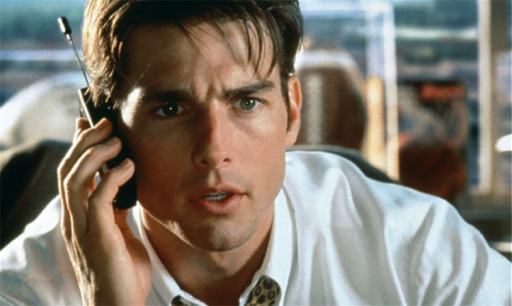
While quotes such as “show me the money” would stick more clearly in people’s minds, there are deeper messages in the “Jerry Maguire” movie that can help us plan and deliver well against our organisational transformation goals.
If you have not seen the movie, this may be a stretch but I think you will get the gist.
In the movie, Jerry Maguire played by Tom Cruise is a highly successful sports agent that brokers deals for the athletes on his roster. Jerry is doing well and it appears that things will continue to be rosy for him until he realises that he is falling out of line with his values and the sheer mass and turmoil of what he is doing is affecting his passion for the role.
To cut a long story short, Jerry feels motivated to pen a vision statement that he sends around to all of his sales peers. It proposes that they take less clients, earn less money from them and make their involvement more genuine and contribute to a better industry.
This did not help Jerry in the short term. He was unceremoniously dumped and he left the office grasping a box of belongings, a scared goldfish and an out of sorts colleague. But – after a challenging journey he was more successful than ever and importantly, totally fulfilled by his achievements.
However (stay with me, this is worth it), Jerry’s stand has a good message for all of us working in change and transformation. That message is simple, we need to help our clients to do less to achieve more for their priority programs. By doing “less” I don’t mean putting the feet up and taking a holiday, but rather understanding what’s most important and ensuring you aren’t taking on a bunch of other lower value activities that can wait and should wait so they don’t detract from your main efforts.
There’s no doubt that organisational leaders are expected to be ambitious, to do more with less and use innovative approaches to constantly improve. I’m not disagreeing with this. Instead, it’s worth understanding what will yield the most value and to some extent protecting that transformation process by not diluting it with too many other things.
We know that an alarmingly high number of change projects fail, for any number of reasons. John Kotter is often quoted as saying 70 percent of change efforts fail. While this statistic is not well established or supported, he does point out in his commentary on reasons for failure that one common mistake is the inability to remove obstacles.
Now obstacles are tricky things and they can be visible and known or emerging and unknown. They may also appear to be harmless activities that are worth supporting as they are in some way complimentary to your transformation program.
The critical consideration here is whether they will add or detract from your transformation activities in terms of engagement, effort, expenditure or momentum. It is often the case that a transformation program is undertaken and much commitment is made to support it, but key decisions are not taken or communicated at the same time. This is a dangerous position that is very hard to manage.
The greatest strength an organisation has when heading off with new strategic plan is an inspired workforce that are motivated in the same direction. Of course they need to be supported with tools, technology and skills to make a change, but if they are not on board with your vision, then you will be pushing your barrow up hill.
The first thing that will stop you on-boarding successfully is unknowns. The problem is, they stand out, like a couple of bricks missing from a wall and they draw the gaze of all the people you would like to see backing your initiative and before you know it, you are back where you started. People form associations with these events and getting your initiative off the ground again after a well-recognised false start is tricky.
In Jim Collin’s book “Good to Great” he discusses what he calls the “Hedgehog concept”. Within this concept, he encourages people to look at one big thing and focus on that as opposed to the many things that can dilute your attention, resolve and critically, disengage your people.
In simple terms, Maguire, Kotter and Collins provide us with means to consider what’s most important to us, apply that to your change and transformation planning and then protect that process until its benefits are realised. These things are never easy, but if you can constantly apply a priority and contribution filter to your planning, your transformation program may just realise its objectives.






